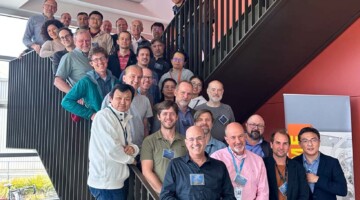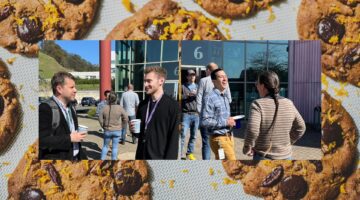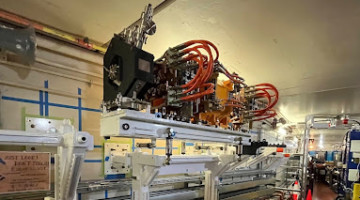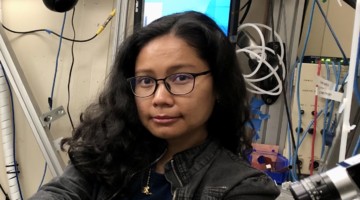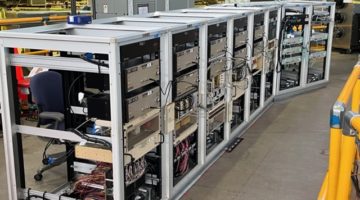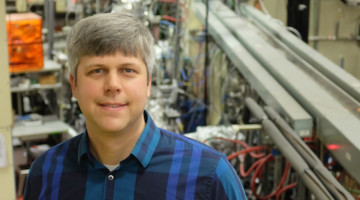The ALS hosted its first Beamline Optics and Modeling School (BLOMS 2023), a three-day, hands-on workshop to teach the theory, methods, strategy, and tools used to design and model x-ray beamlines. Experts from four other light sources and one private company showed students the capabilities of modern, freely available tools for x-ray source and beamline modeling. Read more »
Features
ALS User Forum: A Time for Cookies with Colleagues
The place, frequency, and snack selection might have changed over the years, but Cookie Time has always been a way for the ALS community to gather. In its current incarnation, different groups contribute their favorite snacks, and all are welcome to mingle each Thursday at 3 p.m. Read more »
Gemini Beamline 2.0.1 Banks Its First Protein Structure
A protein structure obtained from ALS Beamline 2.0.1 (“Gemini”) has recently been published in the literature and deposited into the Protein Data Bank (PDB)—two significant firsts for this beamline. The structure helped provide new insights into the molecular mechanisms involved in triggering certain inflammatory diseases. Read more »
Winter 2023 Shutdown
The winter 2023 shutdown was relatively short. It started just after the holiday shutdown, and user operations resumed on February 16, delivering on the ALS commitment to minimize shutdown length as much as possible. Read more »
Azzuliani Supangat, 2022 LAAAMP Fellow
A professor at the Universiti Malaya in Kuala Lumpur, Supangat is interested in organic semiconductors. She and her student, Syaza Hisamuddin, are spending two months at the ALS working with Staff Scientist Chenhui Zhu. Read more »
Summer 2022 Shutdown Recap
The ALS returned to user operations on August 23 after its summer shutdown. The work included larger projects, such as installation of magnet stands for the ALS-U accumulator ring and the replacement of the liquid nitrogen tank, as well as several other facility improvements. Read more »
Valeriy Yashchuk Receives 2022 Klaus Halbach Award
Valeriy Yashchuk aims to make the binary pseudo-random calibration tool (BPR) the internationally recognized standard for thorough characterization of a broad spectrum of topography measuring tools. Others might find it daunting to convince scientists around the world to agree on one standard, but Yashchuk is accustomed to roadblocks, and finding creative solutions to them. The ALS Users’ Executive Committee recognized Yashchuk, program lead for metrology, for developing this critical technology. Read more »
Kevan Anderson and the BCG Receive 2022 Renner User Services Award
At this year’s ALS User Meeting, Kevan Anderson, on behalf of the Beamline Controls Group (BCG), was honored with the 2022 Tim Renner User Services Award. The ALS Users’ Executive Committee made the selection for “broad expertise in control systems and software development, and professional judgment and decision-making, which have greatly contributed to the research and development program of the Advanced Light Source.” Read more »
2022 User Meeting Highlights
The ALS User Meeting was held August 15–17, 2022, co-chaired by UEC members Hope Michelsen, Yu He, and Rourav Basak. With Steve Kevan’s retirement and the approaching ALS-U implementation phase, the overarching theme of this year’s User Meeting was a celebration of the glorious past and anticipation of a very bright future. Read more »
Jinghua Guo to Receive the 2022 Shirley Award
ALS senior scientist Jinghua Guo is the recipient of this year’s Shirley Award for Outstanding Scientific Achievement at the ALS. Guo is being recognized for pioneering the development of operando soft x-ray spectroscopy, work that’s enabled studies under realistic conditions, which is of great importance in environmental and energy research. Read more »
- « Previous Page
- 1
- …
- 3
- 4
- 5
- 6
- 7
- …
- 14
- Next Page »
